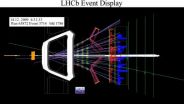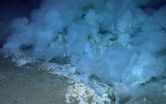(Press-News.org) It's not only the biology of lakes that varies with the climate and other environmental factors, it's also their chemistry. More knowledge about this is needed to understand the ecology of lakes and their role in the carbon cycle and the climate. Today an international research group led by Uppsala University is publishing a comprehensive study of the composition of organic compounds in the prestigious journal Nature Communications.
- Lake water is like a very thin broth with several thousand ingredients in the recipe, all with different properties. At the same time many of the molecules are common in a broad spectrum of different environments. For instance, in the extremely complex chemical mixture we have found the same components as colleagues have described from the Congo. And they react to environmental factors in the same way in the tropics as in Sweden, says Lars Tranvik, who directed the study.
All of the world's lakes cover only three per cent of the surface area of the continents, but they nevertheless play a huge role in the carbon cycle of the planet. Among other things, there is an outflow of carbon dioxide to the atmosphere. This is largely due to the fact that these lakes take in tremendous amounts of organic materials from the surrounding land, and these are also converted in the water with the help of microorganisms.
Most of this organic matter is found in dissolved form in the water and consists of thousands of different molecules. The present study is the most comprehensive investigation ever of how the composition of these organic compounds is formed by processes in lakes and their catchments in the surrounding landscape. The researchers have analysed the make-up of the dissolved organic matter in 120 lakes from north to south in Sweden, as well as how its composition varies with the climate and other factors.
The study is a collaborative project involving a group of scientists from the Limnology program at Uppsala University and the Max Planck Institute for Marine Microbiology in Bremen/ University of Oldenburg. It is based on, among other things, data from a national environmental survey which monitors water chemistry and other properties of lakes. In addition, the researchers have performed detailed analyses of the organic material with the help of a powerful instrument in Germany – a high-resolution mass spectrometer.
The results show that not only biological diversity but also chemical diversity is regulated by various environmental factors. For example, in lakes with long water retention times, that is, where the water remains in place for a long period before being transported downstream, molecules from surrounding forests and wetlands are largely broken down.
- This leads to a completely different chemical composition, where the content of compounds that are produced by plankton in the lakes is more dominant, says Anne Kellerman, a doctoral candidate who is the lead author of the article.
By comparing lakes in different climates, we can get a picture of what chemical composition the water will have in a future climate with higher temperatures and more precipitation. This has consequences for how we should locate and design plants for drinking water production in the future.
- We're now continuing our investigations of the chemical diversity of nature by trying to figure out what mechanisms underlie the patterns we're finding. What determines that organic material in some cases is preserved in nature for a long time, and why is it degraded quickly under different circumstances? wonders Lars Tranvik.
This research is being conducted in a strong research environment funded by the Swedish Research Council Formas, "Color of Water", which is analysing current and future changes in the organic matter in lakes, and how this affects both drinking-water production and the ecology of the lakes.
INFORMATION:
Reference: Kellerman, A.M., Dittmar, T., Kothawala, D.N., and Tranvik. L. J Chemodiversity of dissolved organic matter in lakes driven by climate and hydrology. Nature Communications xxxxx
DOI: 10.1038/ncomms4804
Contact:
Lars Tranvik, professor, Limnology, department of Ecology and Genetics, mobile: 070 225830. lars.tranvik@ebc.uu.se
Anne Kellerman, PhD student, Limnology, department of Ecology and Genetics, mobile: 072 2168380. anne.kellerman@ebc.uu.se
Dolly Kothawala, researcher, Limnology, department of Ecology and Genetics, mobile: 073 5247371. dolly.kothawala@ebc.uu.se
Nature's chemical diversity reflected in Swedish lakes
2014-05-02
ELSE PRESS RELEASES FROM THIS DATE:
Stimulated mutual annihilation
2014-05-01
Twenty years ago, Philip Platzman and Allen Mills, Jr. at Bell Laboratories proposed that a gamma-ray laser could be made from a Bose-Einstein condensate (BEC) of positronium, the simplest atom made of both matter and antimatter (1). That was a year before a BEC of any kind of atom was available in any laboratory. Today, BECs have been made of 13 different elements, four of which are available in laboratories of the Joint Quantum Institute (JQI) (2), and JQI theorists have turned their attention to prospects for a positronium gamma-ray laser.
In a study published ...
Syracuse University physicists confirm existence of new type of meson
2014-05-01
Physicists in the College of Arts and Sciences at Syracuse University have made several important discoveries regarding the basic structure of mesons—subatomic particles long thought to be composed of one quark and one antiquark and bound together by a strong interaction.
Recently, Professor Tomasz Skwarnicki and a team of researchers proved the existence of a meson named Z(4430), with two quarks and two antiquarks, using data from the Large Hadron Collidor beauty (LHCb) Collaboration at CERN in Geneva, Switzerland. This tetraquark state was first discovered in Japan ...
Investigators find something fishy with classical evidence for dietary fish recommendation
2014-05-01
Philadelphia, PA, May 1, 2014 – Oily fish are currently recommended as part of a heart healthy diet. This guideline is partially based on the landmark 1970s study from Bang and Dyerberg that connected the low incidence of coronary artery disease (CAD) among the Eskimos of Greenland to their diet, rich in whale and seal blubber. Now, researchers have found that Eskimos actually suffered from CAD at the same rate as their Caucasian counterparts, meaning there is insufficient evidence to back Bang and Dyerberg's claims. Their findings are published in the Canadian Journal ...
Atypical form of Alzheimer's disease may be present in a more widespread number of patients
2014-05-01
JACKSONVILLE, Fla. — Neuroscientists at Mayo Clinic in Florida have defined a subtype of Alzheimer's disease (AD) that they say is neither well recognized nor treated appropriately.
The variant, called hippocampal sparing AD, made up 11 percent of the 1,821 AD-confirmed brains examined by Mayo Clinic researchers — suggesting this subtype is relatively widespread in the general population. The Alzheimer's Association estimates that 5.2 million Americans are living with AD. And with nearly half of hippocampal sparing AD patients being misdiagnosed, this could mean that ...
JCI online ahead of print table of contents for May 1, 2014
2014-05-01
Balancing protein turnover in the heart
Alterations in the ubiquitin proteasome system (UPS), which tags proteins for degradation, underlies some cardiomyopathies and age-related cardiac dysfunction. In the heart, the UPS is essential for the precise balance between cardiomyocyte atrophy and hypertrophy. In skeletal muscle, the E3 ubiquitin ligase atrogin-1 promotes atrophy by targeting hypertrophy-associated proteins for degradation; however, a role for atrogin-1 in cardiac proteostasis is not clear. In this issue of the Journal of Clinical Investigation, Marco Sandri, ...
Undersea warfare: Viruses hijack deep-sea bacteria at hydrothermal vents
2014-05-01
More than a mile beneath the ocean's surface, as dark clouds of mineral-rich water billow from seafloor hot springs called hydrothermal vents, unseen armies of viruses and bacteria wage war.
Like pirates boarding a treasure-laden ship, the viruses infect bacterial cells to get the loot: tiny globules of elemental sulfur stored inside the bacterial cells.
Instead of absconding with their prize, the viruses force the bacteria to burn their valuable sulfur reserves, then use the unleashed energy to replicate.
"Our findings suggest that viruses in the dark oceans indirectly ...
Excessive regulations turning scientists into bureaucrats
2014-05-01
Excessive regulations are consuming scientists' time and wasting taxpayer dollars, says a report released today by the National Science Board (NSB), the policymaking body of the National Science Foundation and advisor to Congress and the President.
"Regulation and oversight of research are needed to ensure accountability, transparency and safety," said Arthur Bienenstock, chair of the NSB task force that examined the issue. "But excessive and ineffective requirements take scientists away from the bench unnecessarily and divert taxpayer dollars from research to superfluous ...
Electronic nose sniffs out prostate cancer using urine samples
2014-05-01
New York, NY, May 1, 2014 – We may soon be able to make easy and early diagnoses of prostate cancer by smell. Investigators in Finland have established that a novel noninvasive technique can detect prostate cancer using an electronic nose. In a proof of principle study, the eNose successfully discriminated between prostate cancer and benign prostatic hyperplasia (BPH) by "sniffing" urine headspace (the space directly above the urine sample). Results using the eNose are comparable to testing prostate specific antigen (PSA), reports the Journal of Urology®.
Prostate cancer ...
Oral Cancer linked to human papillomavirus: No increased HPV risk for long-term partners
2014-05-01
Partners of patients diagnosed with human papilloma virus (HPV)-positive oropharyngeal cancer (OPC) were no more likely to test positive for oral HPV infection than people in the general population, according to a study published in the April 28 online edition of the Journal of Clinical Oncology. The findings should lessen anxiety that OPC cancer is contagious, at least among long-term partners, and confirms that couples who have been together for several years do not need to change their intimacy or sexual behavior because of the cancer diagnosis.
HPV infection is common ...
Study in Science finds missing piece of biogeochemical puzzle in aquifers
2014-05-01
A study published today in Science by researchers from the U.S. Department of Energy's Argonne National Laboratory may dramatically shift our understanding of the complex dance of microbes and minerals that takes place in aquifers deep underground. This dance affects groundwater quality, the fate of contaminants in the ground and the emerging science of carbon sequestration.
Deep underground, microbes don't have much access to oxygen. So they have evolved ways to breathe other elements, including solid minerals like iron and sulfur.
The part that interests scientists ...



